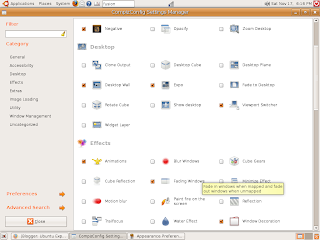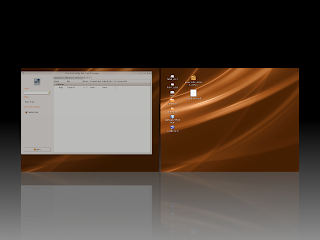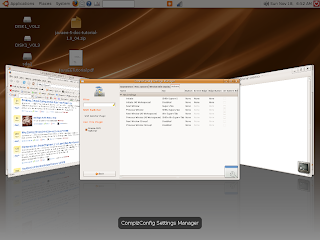 Till the time of this writing, repository did not provide beta 1. My patience ran out and decided to install directly without repository. I downloaded the tar.gz2 file of beta 1 directly from Mozilla site. Unpacked it. Now, I am able to run the application by clicking the executable FireFox file through file browser. It is cumbersome to open file browser and start beta 1, but it is better than not having it. The screen-shot attached here will show that I am using beta 1. At one time, I was using three versions of FireFox. They were; - stable 2.0.0.10, 3.0 alpha 8 and 3.0 beta 1. I removed alpha 8 later. Obviously, Beta 1 is the most used browser by me now.
Till the time of this writing, repository did not provide beta 1. My patience ran out and decided to install directly without repository. I downloaded the tar.gz2 file of beta 1 directly from Mozilla site. Unpacked it. Now, I am able to run the application by clicking the executable FireFox file through file browser. It is cumbersome to open file browser and start beta 1, but it is better than not having it. The screen-shot attached here will show that I am using beta 1. At one time, I was using three versions of FireFox. They were; - stable 2.0.0.10, 3.0 alpha 8 and 3.0 beta 1. I removed alpha 8 later. Obviously, Beta 1 is the most used browser by me now.My impressions of Beta 1:
- The first thing I noticed is that it is fast in loading web pages as well as files. It could be felt visibly. Application also loads fast. The reason could be that none of my add-ons work with Beta 1. I am sure on this.
- The address bar provide more suggestions from surfing history as I type a word. It provides the address as well as the page title. This additional information helps to easily identify the web site one is looking for.
- The release note informs that there are many security enhancements. I am not qualified to discuss them.
- I like the page information module.
 It allows media files to be saved from the web site. It is more helpful to a budding web developer like me. I am providing a screen-shot of what I am talking about. The Permission tab facilitates blocking pop-ups, cookies and file downloads for individual sites. Security tab provides access to password manager. I feel a bit more secured than earlier. It may be short lived, until I notice some report of new vulnerabilities.
It allows media files to be saved from the web site. It is more helpful to a budding web developer like me. I am providing a screen-shot of what I am talking about. The Permission tab facilitates blocking pop-ups, cookies and file downloads for individual sites. Security tab provides access to password manager. I feel a bit more secured than earlier. It may be short lived, until I notice some report of new vulnerabilities.
Overall, I like the new beta 1. I had a few crashes while trying tab functions. I may have to catalog them and report as bugs.




